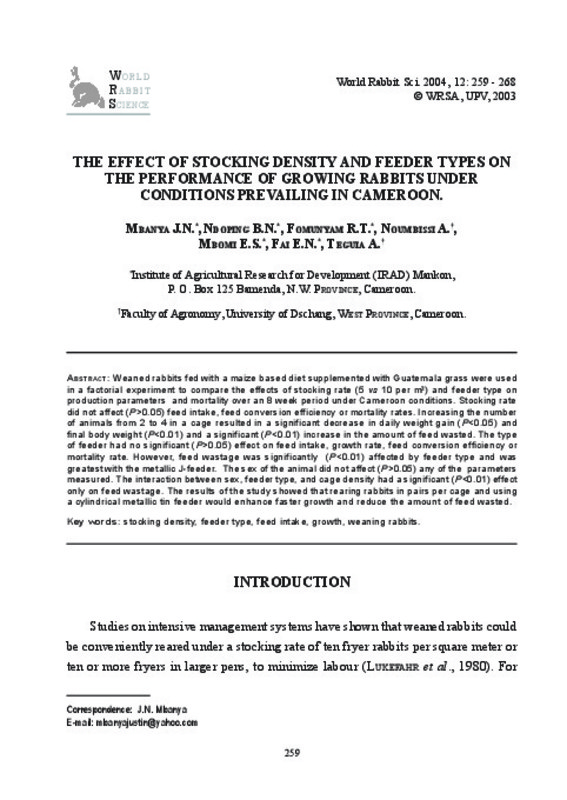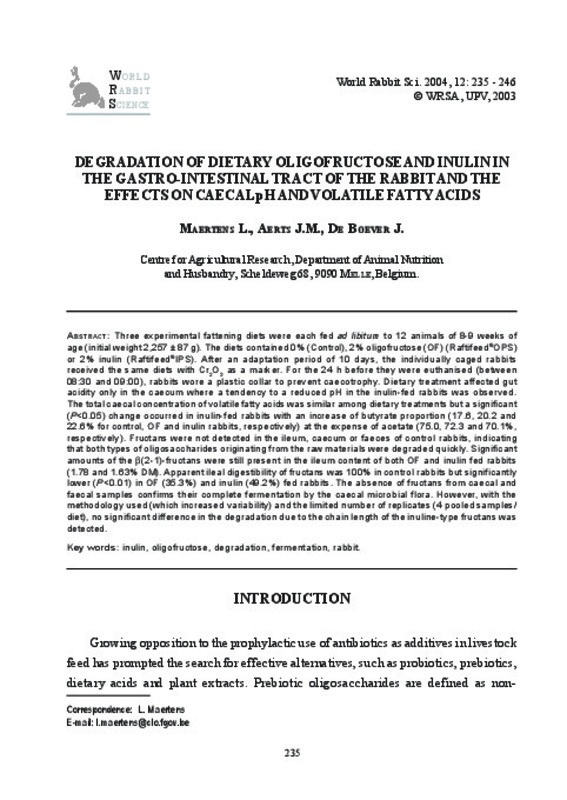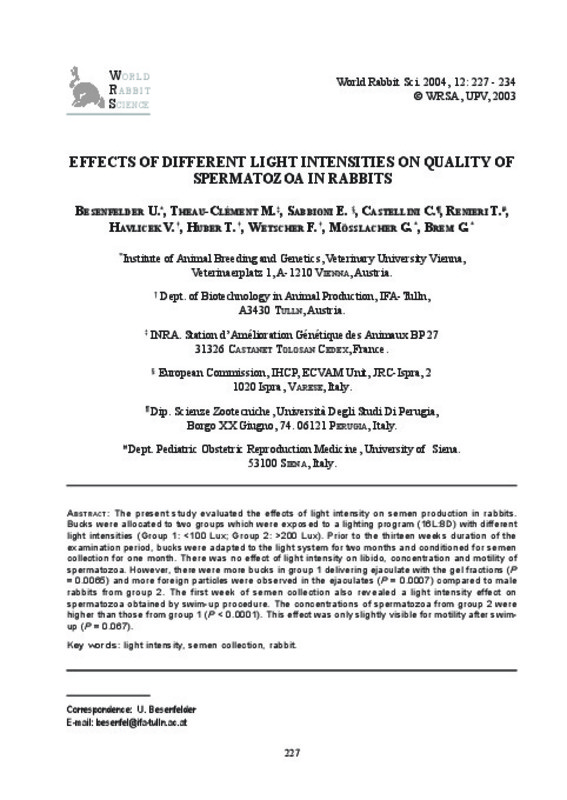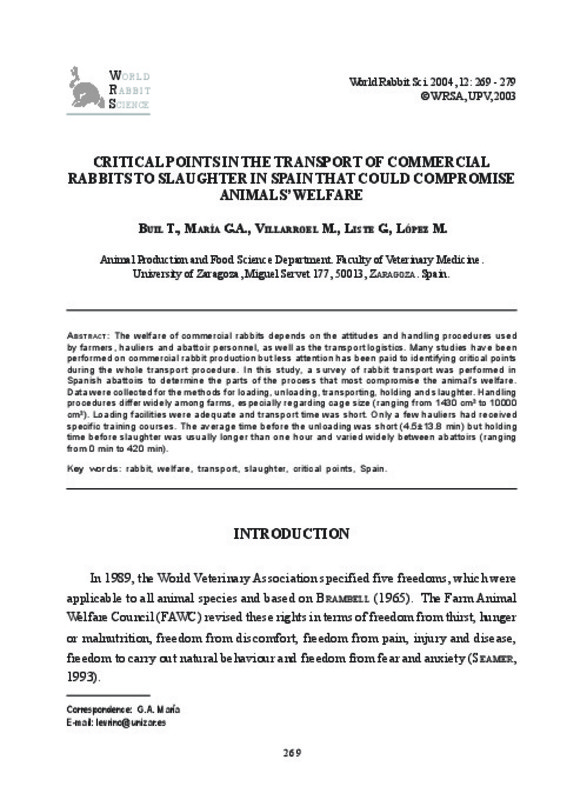- RiuNet repositorio UPV
- :
- Investigación
- :
- Material investigación. Editorial UPV
- :
- Revistas UPV. Editorial UPV
- :
- World Rabbit Science
- :
- World Rabbit Science - Vol. 12 (4)-2004
JavaScript is disabled for your browser. Some features of this site may not work without it.
Refinar
World Rabbit Science - Vol. 12 (4)-2004
Tabla de contenidos
- Effects of different light intensities on quality of spermatozoa in rabbits
- Degradation of dietary oligofructose and inulin in the gastro-intestinal tract of the rabbit and the effects on caecal pH and volatile fatty acids.
- Influence of open-air rearing on fatty acid composition and sensory properties of rabbit meat.
- The effect of stocking density and feeder types on the performance of growing rabbits under conditions prevailing in Cameroon.
- Critical points in the transport of commercial rabbits to slaughter in Spain that could compromise animals' welfare.









